Using an external hard drive is a great way to back up what’s most important to you while retaining full access to your data. But you don’t necessarily need to buy a pre-built external drive. If you have an old hard drive lying around, sticking it in an enclosure can give you a new external drive at a fraction of the cost.
These are our favorites, from fantastic USB-C enclosures like the Ineo Shockproof enclosure to the Rosewill RX-358 with its fantastic fan cooling system. There’s something for everyone here.

Ineo Shockproof hard drive enclosure
Best all-around hard drive encloser
Pros
- USB-C connections for modern stations
- Extra drive protection
- Sturdy design
Cons
- Not suitable for USB-A connections
Why you should buy this: The Ineo Shockproof external hard drive enclosure comes with a rugged case design and support for modern USB-C connections.
Who’s it for: Laptop and desktop owners who need a durable and sturdy 2.5-inch form factor.
Why we picked the Ineo Shockproof external hard drive enclosure:
USB-C connections are commonplace on modern laptops and are beginning to appear on desktops, too. But most hard drive enclosures still only use USB-A. Not so with the Ineo 2.5-inch enclosure, which sports not only a USB-C 3.1 connection but a supremely protective chassis, too. The enclosure has a rubberized exterior band to help protect against drop damage, and it’s entirely waterproof. This ensures it can get through the toughest of situations.
The Ineo Shockproof enclosure is only compatible with 2.5-inch drives, but that means it can do away with any need for external power. It’s compatible with major consoles, Windows PCs, and MacOS.
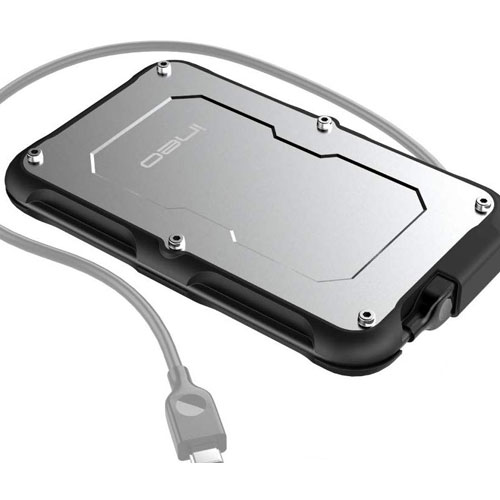
Ineo Shockproof hard drive enclosure
Best all-around hard drive encloser
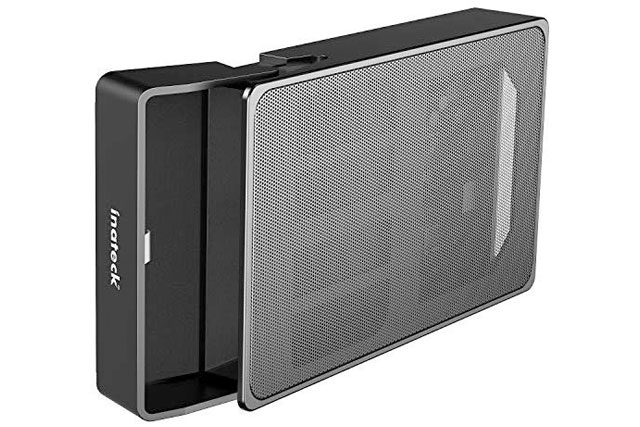
Inateck 3.5-inch enclosure
Best 3.5-inch enclosure
Pros
- Mesh design for better cooling
- An option for those with 3.5-inch drives
- Easy to install drives
Why you should buy this: The Inateck 3.5-inch enclosure comes with a unique mesh design to prevent overheating and the added benefit of no extra noise being generated.
Who’s it for: Home and office users needing extra storage on a traditional 3.5-inch drive form factor.
Why we picked the Inateck 3.5-inch enclosure with mesh case:
A 3.5-inch drive needs more than a 2.5-inch drive. It needs more power and more space, which in turn can lead to more heat buildup. That’s what makes the Inateck enclosure perfect for our needs. It accommodates drives up to 10TB in the 3.5-inches size, and its external power cable means that it can power them, too. To prevent overheating, one side is entirely mesh-covered, helping to circulate air across the drive, but without the added noise or point of failure of an active fan.
The Inateck 3.5-inch enclosure only supports USB 3.0, so it isn’t the fastest enclosure around. But it should be quick enough for most needs.
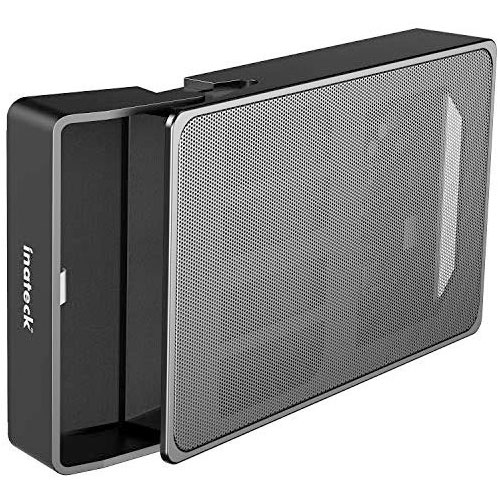
Inateck 3.5-inch enclosure
Best 3.5-inch enclosure

Mediasonic Raid 4-bay (USB-C)
Best multi-drive enclosure
Pros
- Network enclosure for up to four drives
- Hardware embedded raid controller
- Builf in USB hub
Cons
- Not often used outside the office or studio
Why you should buy this: The Mediasonic Raid 4-bay is a network drive that supports a maximum of four drives for all your storage needs.
Who’s it for: Office users and creative professionals needing a robust data archiving solution.
Why we picked the Mediasonic Raid 4-bay:
You might run into a situation where you’re working with more than one hard drive that you’d like to put into external drives. Whenever that’s the case, it makes sense to get one large external drive for all of them. This model can support a maximum of four 3.5-inch SATA drives, up to 16TB per drive, or 2.5-inch SSDs up to 12TB per drive. It also includes a built-in Raid controller that provides six configuration variations. Both USB-C and USB-A 3.1 will operate well with this enclosure, making it great for a wide selection of drives.
It also features complete support for UASP for an accelerated transfer between the SATA and USB mediums. Moreover, it comes with an active cooling fan with SMART temperature tracking. This helps to ensure that it only starts when it’s essential to cool the drives down if they start to get too hot.
Installation is simple and almost effortless, all because of a quick-slot device at the Mediasonic’s back, with synchronization between your PC and the enclosure, ensuring that the drives never operate longer than needed. Each of these valuable features makes it an excellent option for those with a modestly-sized office or a bustling studio. However, we must point out that the process is a tad more involved than the standard PC build’s method — and it’s also higher-priced.
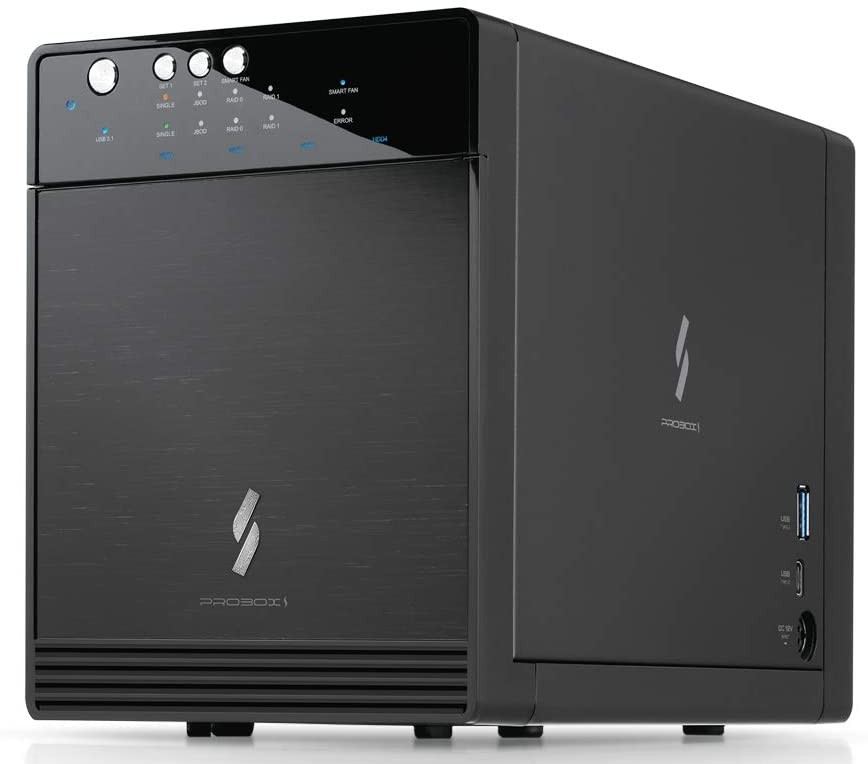
Mediasonic Raid 4-bay (USB-C)
Best multi-drive enclosure
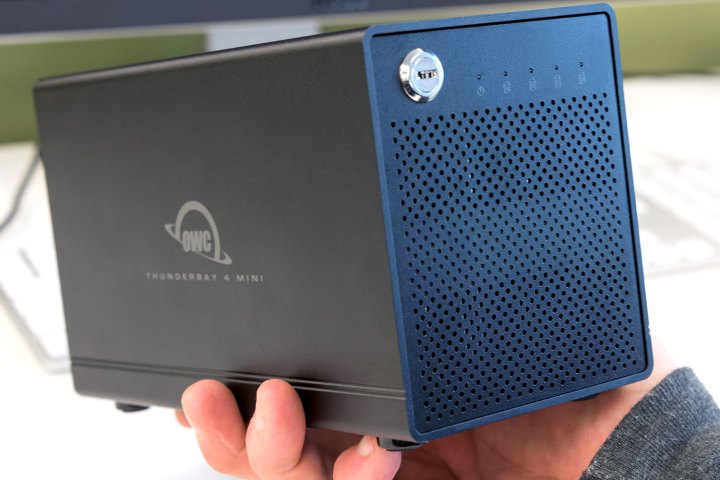
OWC ThunderBay 4 RAID 5 4-Bay External Storage
Best enclosure for media servers
Pros
- Can be connected into large arrays via Thunderbolt
- Includes software for creating, monitoring, and managing advanced RAID sets
- Works with 3.5-inch or 2.5-inch drives
Cons
- Primarily for large media servers and professional photo/video businesses
Why you should buy this: The OWC ThunderBay 4 can accommodate four drives, but the Thunderbolt connection allows up to six ThunderBay 4 enclosures to be daisy-chained together to house a total of 24 SSDs or HDDs!
Who’s it for: Videographers, photographers, and creative professionals with robust storage needs.
Why we picked the OWC ThunderBay 4:
OWC’s ThunderBay 4 is designed to house your biggest data files. Even though each unit supports up to four hard drives, the inclusion of dual Thunderbolt 3 ports on each ThunderBay 4 means that you can daisy-chain multiple enclosures today for massive amounts of storage. When maxed out, that means you can max out your storage needs with up to 24 drives spread across six ThunderBay 4 units. This is a great storage solution for videographers, photographers, or those wishing to run their own media server.
Each drive slot on the ThunderBay 4 can accommodate either a 2.5- or 3.5-inch HDD or SSD, and the unit is RAID compatible. The drives are hot-swappable, and you can mix and match a variety of drives and formats for even greater versatility. Everything is housed in a simple black aluminum housing to keep things professional. A quiet fan keeps everything running smoothly inside, and the metal construction not only looks premium but also helps to dissipate heat.
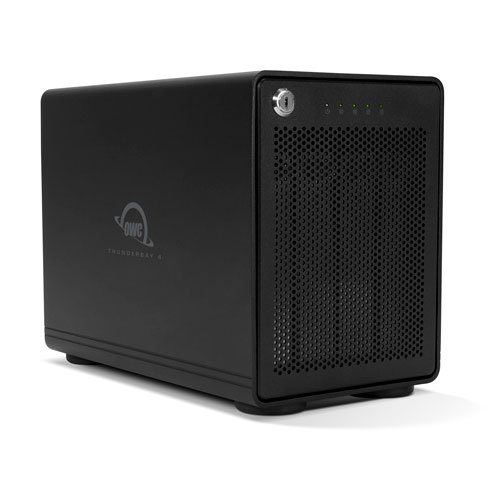
OWC ThunderBay 4 RAID 5 4-Bay External Storage
Best enclosure for media servers

Inatech RGB Hard Drive Docking Station
Best enclosure for both SSD and HDD
Pros
- Supports SSDs and HDDs
- RGB indicators
- Two bays avaialble
Cons
- May be more than what some PC users need
Why you should buy this: The Inatech RGB Hard Drive Docking Station is a hub designed to transfer data or back up information between various internal drives without requiring a drive enclosure for each drive.
Who’s it for: Advanced PC users and SMB IT managers who need to clone drives.
Why we picked the Inatech RGB Hard Drive Docking Station:
If you have a home battlestation, something like the Mediasonic bay is probably too complex for your needs, but you may still want to juggle multiple hard drives, especially if you are in the process of upgrading or just have a lot of data to handle. This Inateck dock is an ideal solution, with slots for 2.5- and 3.5-inch SSDs or HDDs. It supports the UASP transfer protocol and enables offline cloning for rapid backups (with LED indicators to help chart progress).
The Inateck docking station also has RGB LEDs to add a little color to the proceedings. When a drive is busy, the lights will use a flash effect to show data is being transferred. When the dock goes to sleep after a period without use, it switches to a slow “breathing” effect instead.
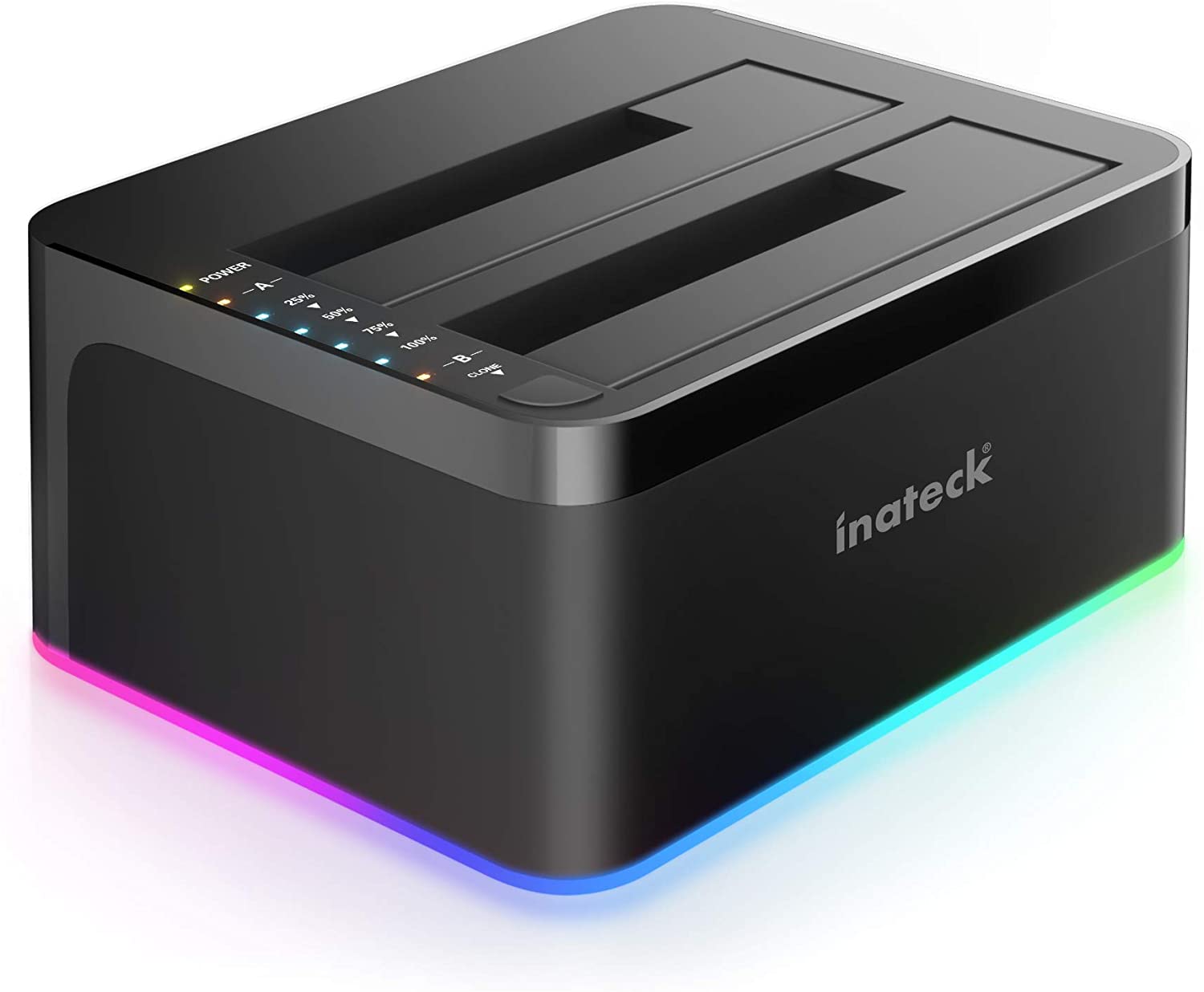
Inatech RGB Hard Drive Docking Station
Best enclosure for both SSD and HDD
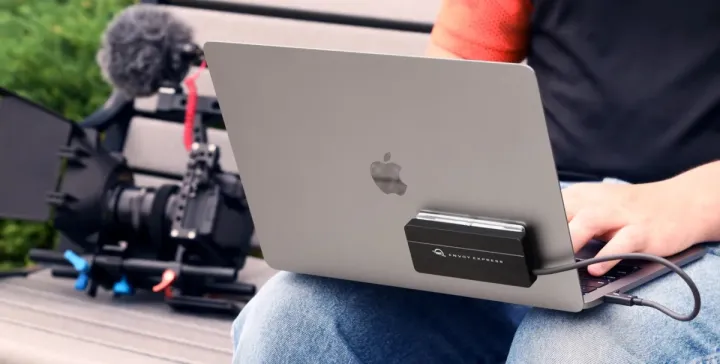
OWC Envoy Express
Best portable enclosure
Pros
- Extremley portable
- Thunderbolt 3 connectivity
- Includes mounting system
Cons
- Made for laptops on the go, not desktops
Why you should buy this: The OWC Envoy Express is the world’s first external Thunderbolt 3 drive enclosure designed for mobile.
Who’s it for: Any Mac or PC user with a Thunderbolt 3 port.
Why we picked the OWC Envoy Express:
Billed as the world’s first Thunderbolt certified bus-powered portable hard drive enclosure, OWC’s Envoy Express relies on a Thunderbolt 3 connection to deliver blazing fast speeds. It’s still not as good as newer Thunderbolt 4 drives, but it gets the job done. With an NVMe M.2 solid-state added to the interior, OWC boasts that the Envoy Express can deliver up to 300% faster speeds than the fastest USB 3.0 options.
Available in a compact all-aluminum package that is shorter than a ballpoint pen and weighs just 3.3 ounces with a hard drive mounted inside, the Envoy Express is a versatile travel companion designed for road warriors to augment their storage needs. Useful for creative professionals working with large files, the Envoy Express supports real-world speeds as fast as 1553MB per second with M.2 drives of any size. If you’re looking to use the OWC Envoy Express in the field, be sure to find a more rugged SSD to put inside the enclosure. The Envoy Express will work with both Mac and Windows systems.
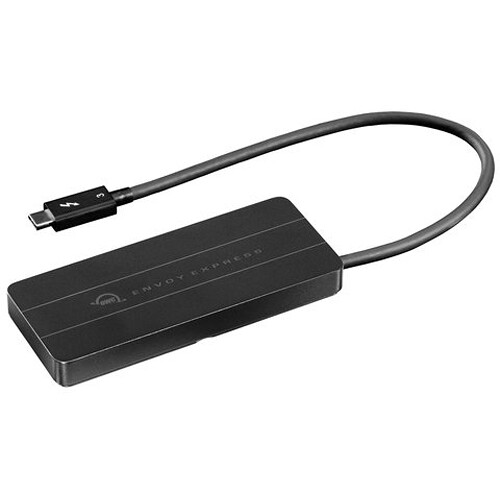
OWC Envoy Express
Best portable enclosure

Asus ROG Strix Arion
Best gaming enclosure
Pros
- RGB lighting
- Two types of cables included
- Aluminum enclosure
Cons
- Works best with other Asus devices for RGB syncing
Why you should buy this: The Asus ROG Strix Arion M.2 SSD Enclosure is designed for fast gaming performance and comes with the company’s signature design to complement ROG laptops and desktops.
Who’s it for: Gamers who want an external SSD with RGB lights that can sync with their rigs.
Why we picked the Asus ROG Strix Arion M.2 SSD Enclosure:
Unlike the other subdued SSD enclosures on our list, the ROG Strip Arion comes blazing with all of its RGB glory. Designed for mobile gamers, the ROG Strip Arion M.2 comes with a number of nice features, including a solidly built aluminum alloy case that helps dissipate heat and support for M.2 PCIe NVMe solid-state storage in 2230, 2242, 2260, or 2280 form factors.
When paired with an Asus gaming rig, the ROG Strip Arion benefits from the company’s Aura Sync lighting effects with the built-in RGB lighting. The drive relies on the USB 3.2 Gen 2×1 for data transfer, and you can connect the external SSD to your laptop via a USB-C cable for speeds up to 10GB per second, according to the company.
If you’re looking to buy an external hard drive that doesn’t need a separate enclosure, we suggest you take a look at our guide on how to choose an external hard drive.
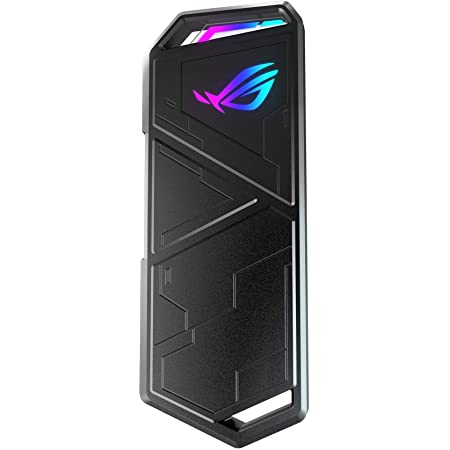
Asus ROG Strix Arion
Best gaming enclosure

Sabrent
Sabrent 2.5-Inch SATA to USB 3.0 Enclosure
Pros
- USB-A to USB-A connectivity
- Tool-free design
- Optimized for SSD
Cons
- Plastic design might get hot
Why you should buy this: The Sabrent 2.5-Inch SATA to USB 3.0 Tool-Free External Hard Drive Enclosure is designed to get the fastest possible speeds out of external SSDs and HDDs.
Who’s it for: Anyone who wants to get USB 3.0 speeds out of a connected device to your PC
Why we picked the Sabrent 2.5-Inch SATA to USB 3.0 Enclosure:
Unlike the other enclosures on our list, this one is made of plastic, making it affordable and lightweight, and portable. That might be important for you if you’re traveling and want to take your files from your main PC on the go. Or even, if you’re a photographer and need storage for your precious moments.
Note that this enclosure also comes with a USB-A 3.0 connection, so it doesn’t offer the fastest transfer speeds. Yet that means it is more than enough to maximize the performance potential for whatever 2.5-inch drive you put in it. USB-A 3.0 connections also might prove handy if you’re on an older system, that doesn’t yet have USB-C available.
Finally, no drivers are also needed when you plug this into your PC or Mac. You can simply plug it in and go without worry. The drives are hot-swappable so you don’t need to worry about data loss when you remove drives from your system.
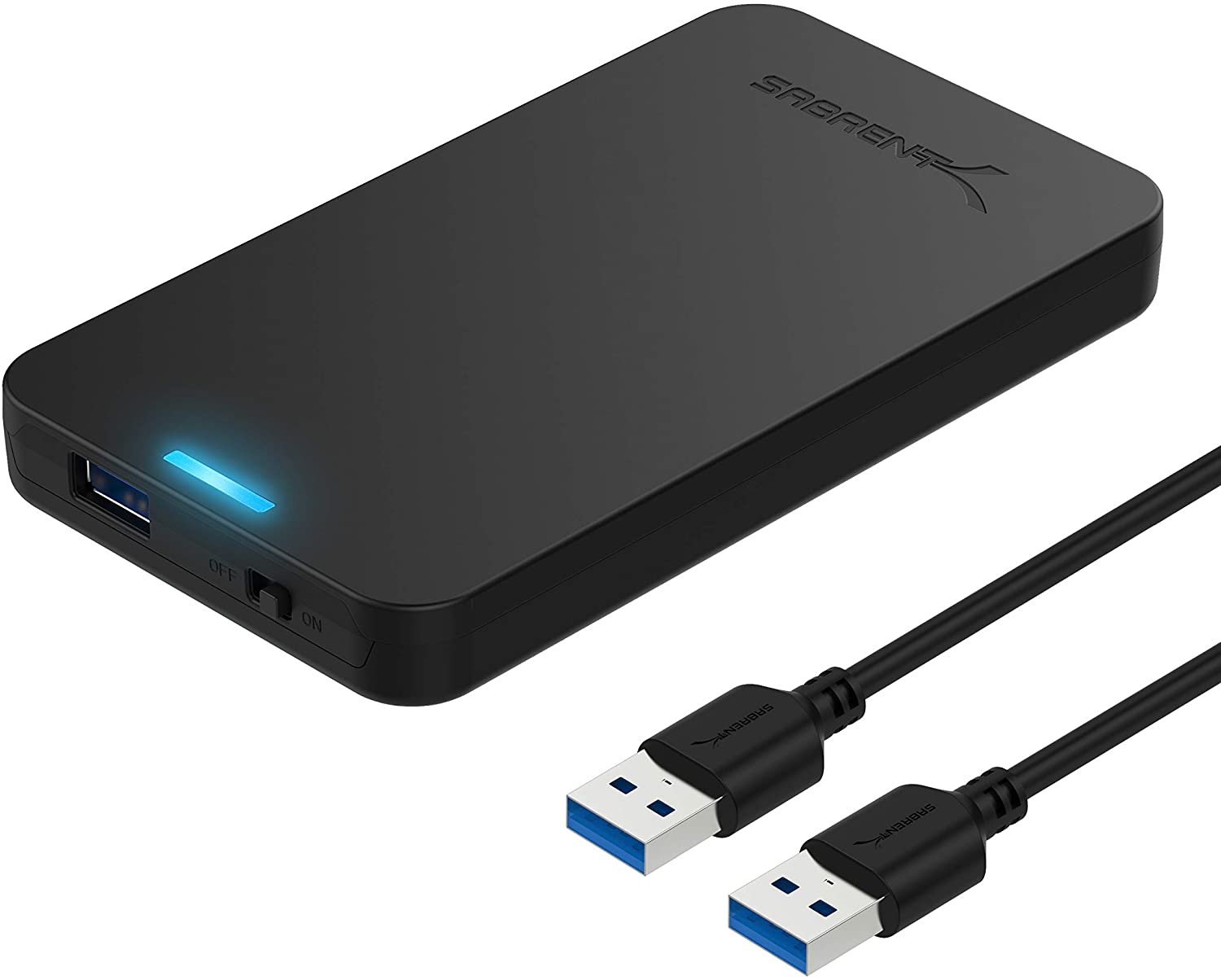
Sabrent 2.5-Inch SATA to USB 3.0 Enclosure
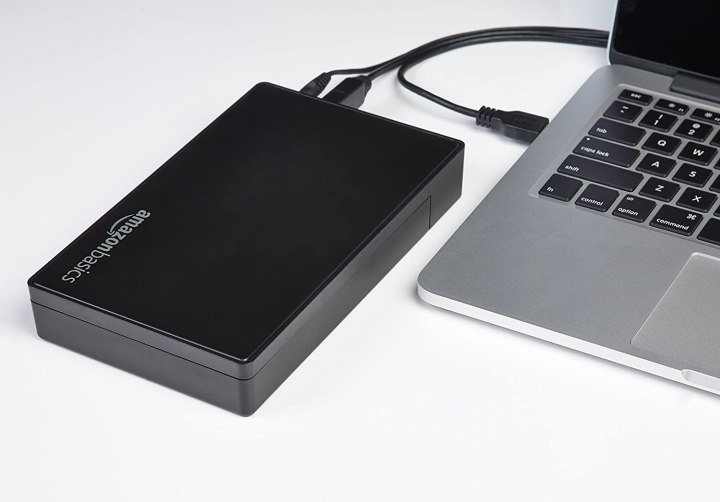
Amazon Basics 3.5-inch SATA HDD Hard Drive Enclosure
Pros
- One year warranty
- Fits SATA I, SATA II, and SATA III HDDs
- Uses USB 3.0 connectivity
Cons
- Bigger and bulkier than most other options, needs external power
Why you should buy this: The Amazon Basics 3.5-inch SATA HDD Hard Drive Enclosure is designed for larger and legacy 3.5-inch SATA HDD drives that need extra power.
Who’s it for: Anyone who wants to connect a legacy hard drive to a PC and get USB 3.0 speeds.
Why we picked the Amazon Basics 3.5-inch SATA HDD Hard Drive Enclosure:
This Amazon Basics 3.5-inch enclosure is pretty basic, but it’s sturdy, supports any 3.5-inch drive you have handy, and it’s pretty affordable too. It has full support for SATA I, II, and III drives, so if you’re trying to plug in something older, it shouldn’t have any issue with it.
Any drive plugged into the enclosure is also hot-swappable. Plus, Plug and Play installation means no drivers are needed. The tool-free design where no hardware is needed for installing an HDD also makes this a good choice for novice users, and it has a little LED indicator light so you’ll always know when it’s working.
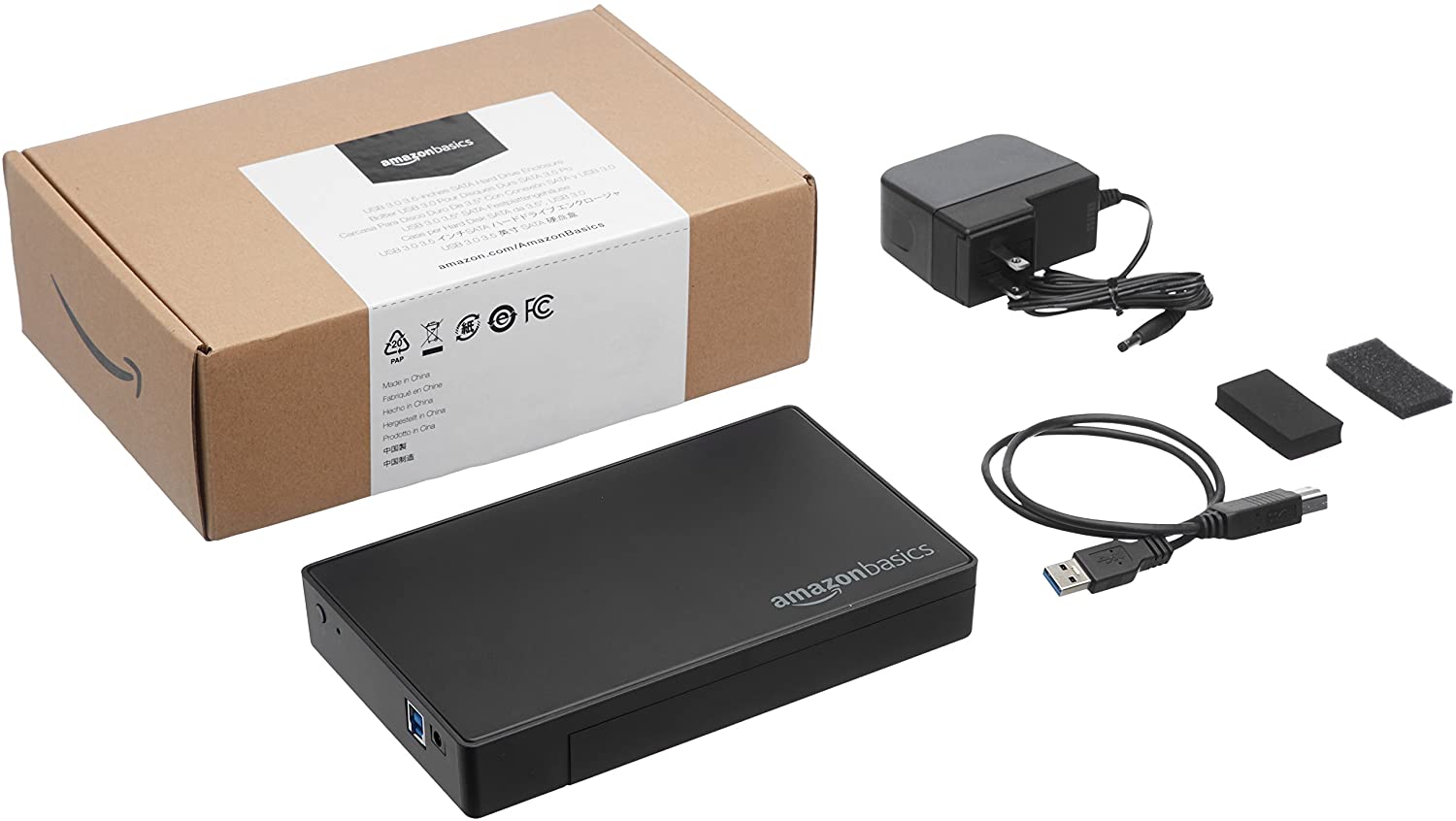
Amazon Basics 3.5-inch SATA HDD Hard Drive Enclosure

StarTech.com 2.5-Inch External Hard Drive Enclosure
Pros
- Reliable brand
- Compact
- Very light
Why you should buy this: The StarTech.com 2.5-Inch External Hard Drive Enclosure is from a trusted brand
Who’s it for: Anyone who needs a reliable 2.5-Inch External Hard Drive Enclosure
Why we picked the StarTech.com 2.5-Inch External Hard Drive Enclosure:
StarTech makes reliable computer accessories, and this enclosure is backed by a 2-year warranty for added peace of mind. It is designed to last and is extremely compact and lightweight, meaning you can travel with it or use it on your desk without taking up too much space.
Data speeds are also rated at 5GBps, which means your files will transfer quite fast between drives if you put something quick in them. As far as the design, this product uses aluminum in its enclosure, giving some protection from drops and bangs, and it offers some measure of heat dissipation to help keep the drive cool during sustained operation.
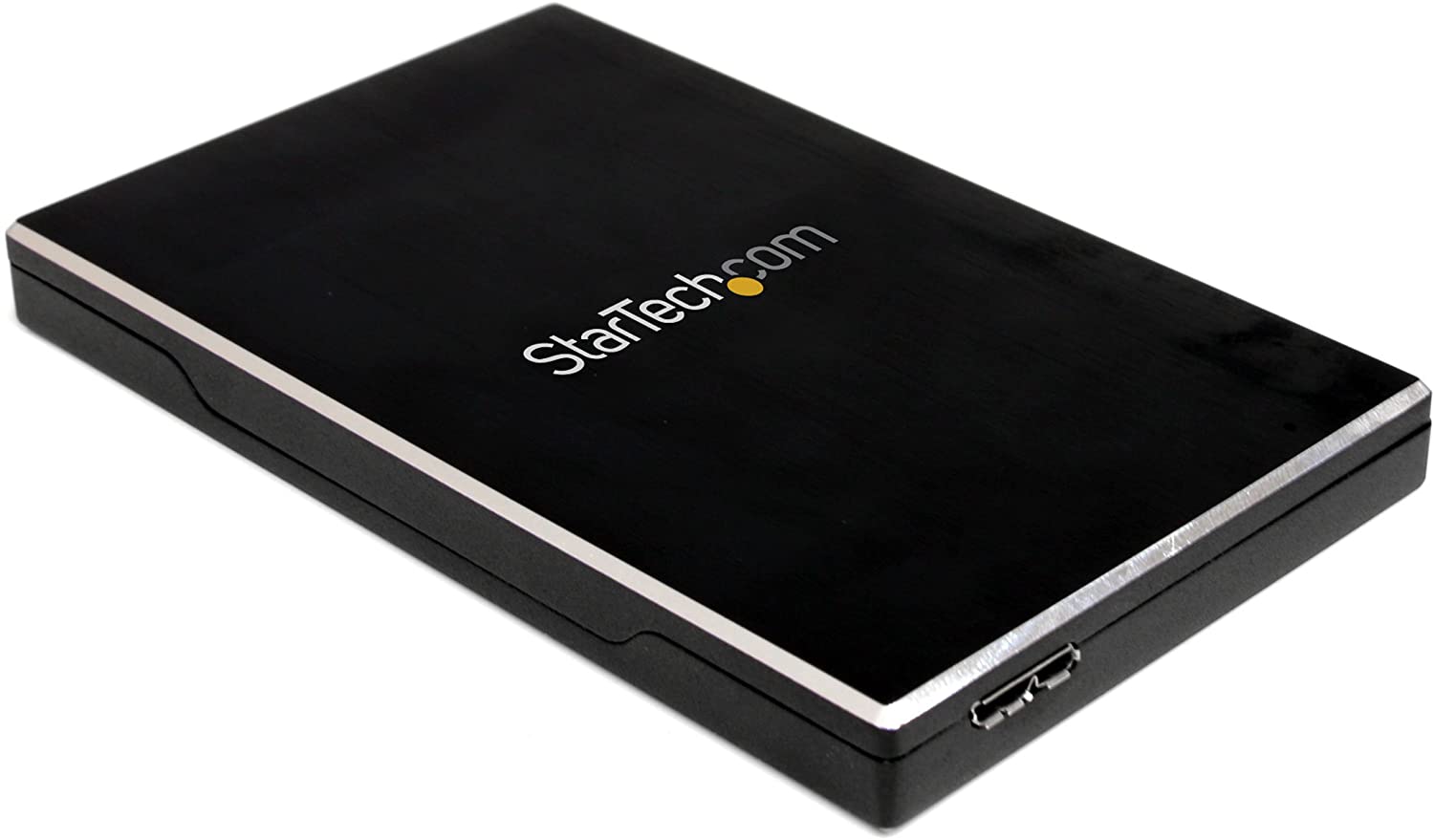
StarTech.com 2.5-Inch External Hard Drive Enclosure
Frequently Asked Questions
What are the benefits of external hard drive enclosures?
They allow you to use an internal hard drive more like an independent external drive. This allows you to position the drive wherever you would like, as well as open the door to multiple storage drive setups even if your PC case doesn’t have the necessary room. Moving the drive outside of the PC helps reduce heat build-up in the computer, too, and certain enclosures can also make swapping drives much easier. If you have a laptop or desktop with a smaller capacity drive, you can save money by upgrading your internal drive and then moving the internal drive into an external drive enclosure. These enclosures will work with both spinning hard disk drives as well as solid-state drives. Opting for a solid-state drive will give you more durability, as there will be fewer moving parts to break. If you need help choosing an SSD, be sure to check out our SSD buying guide.
What materials are hard drive enclosures typically made out of?
This can vary considerably: Plastic and aluminum are common choices for primary materials. Other metals like durable steel may be used. It’s important that the enclosure enables effective heat dissipation no matter what it is made of, but it should be durable enough to protect the drive from accidental knocks or spills. More durable external hard drive enclosures may come with rubber bumpers or rubber gaskets to protect the internal drive, and less mobile enclosures intended for in-home use will likely have fans and active cooling systems.
Are hard drive enclosures safe to use?
Well, your PC case is a type of hard drive enclosure itself, and it’s safe to use. The important question is if the external enclosure has the right features to protect the drive on its own. Note that many of our picks have durable materials, cooling systems, and indicator lights that all help with hard drive management. Cheap materials, or poor designs that build heat instead of helping it dissipate, can be bad news for your drive — focus on quality first.
Do hard drives need enclosures?
If you are using an internal drive, one without its own protective casing, then your drive will need some kind of protection when using it externally. This will also help with drive connections and management.
What should you look for when choosing a hard drive enclosure?
First, you’ll want to look for an enclosure that will work with the type and disk interface standard of drive you’ll be using — if you have a PCIe M.2 drive, you wouldn’t want an enclosure that will exclusively work with a 3.5-inch hard drive, for example. Next, you need to decide how you’ll want to connect your drive to your computer. If your laptop or desktop comes with a variety of ports, this should be easy, but if you have a MacBook Pro with USB-C ports, opting for an enclosure that works only with USB-A won’t work unless you’re willing to carry extra docks or adapters.
You’ll also need to choose an enclosure that delivers the speeds needed to take advantage of your drive’s transfer rates. An enclosure with older electronics may become the bottleneck if you’re looking at moving large files, so you’ll want one that delivers speeds just as fast as what your drive can handle. Next, you’ll want to check to see if the enclosure you use has any capacity limitations. And finally, if you’re looking at mobility applications, you may need to balance several competing factors, including size and weight, ruggedness for durability, and cooling to help protect the drive. Regardless of which enclosure you end up choosing, always remember to back up frequently.
Editors’ Recommendations
